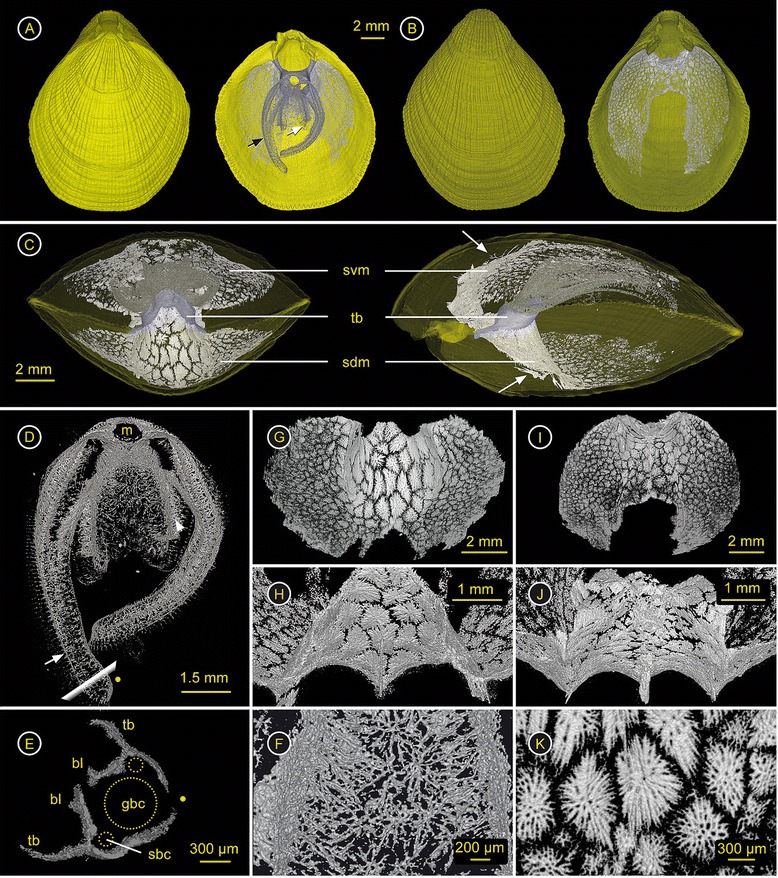Figure 2.

Terebratulina retusa (Cancellothyrididae) – ZMB Bra 2253. Ventral valve = top & dorsal valve = bottom. Click here to download a 3D model of T. retusa (interactive PDF). A) left: Dorsal valve with ventral valve in the background; right: Interior of the dorsal valve with brachidium (purple), endoskeleton of the plectolophous lophophore (grey, black arrow = left lateral brachium, white arrow = right spiral brachium) and spiculation of the dorsal mantle. B) left: Ventral valve; right: Inside of ventral valve showing the incomplete, mesothyrid foramen and mantle spiculation. C) Anterior view through transparent shell with ventral valve on top, transverse band (tb) of the brachidium (purple) supports heavy spiculated lophophore (dark gray), ventral (svm) and dorsal mantle spiculation (sdm); right: Lateral view through transparent shell showing the short brachidium (purple), the endoskeleton of the ventrally ascending, plectolophous lophophore (dark gray), and the heavy mantle spiculation with excrescences on the posterior side into the visceral cavity (arrows). D) Ventral view of plectolophous lophophoral endoskeleton, left lateral brachium (arrow), right spiral brachium (arrow head), mouth (m). E) Cross section through lateral brachium (see D) for orientation), tentacle bases (tb), brachial lip (bl), and location of great (gbc) and small brachial channel (sbc). F) Spicules between the spiral brachia in front of the mouth. G) Anterior view of spicules within the dorsal body wall, smaller spicules (~0.6 mm in diameter) towards the shell margin and thick and large (~1.2 mm) star-shaped spicules in the center forming a posteriorly triple keeled skeleton, with (H) excrescences of single, elongated and branched spicules along the ridges, extending into the visceral cavity. (I) Anterior and posteroventrally (J) view of spiculation in the ventral mantle. (K) Magnification of star-shaped spicules from the median part of the dorsal mantle, max. size ~1.2 mm in diameter and max. 150 μm in thickness.
